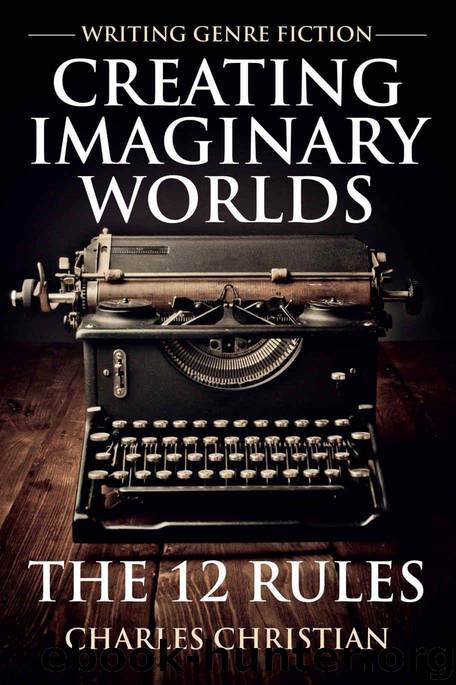Creating Imaginary Worlds: The 12 Rules by Charles Christian

Author:Charles Christian
Language: eng
Format: azw3, epub
Publisher: Urban Fantasist
Published: 2014-07-30T04:00:00+00:00
RULE #6 – THE THICK PLOTTENS
You can have your characters walk with robots upon icy moons, 600 light years from home. You can have your characters on a quest in the company of elves, ghosts and dragons in a mythical age before Atlantis sank beneath the waves. You can have them battle with the Normans at Hastings, ride the range and fall in love with an Apache in 1870s Arizona, or be with a team of crime scene investigators in modern day Las Vegas.
You can go anywhere you want with your plot, the only boundaries are the limitations of your own imagination. Well, perhaps this is not quite true because you also need to have a credible plot. This might seem a contradiction of terms, particularly with science fiction and fantasy stories, but it all comes back to a point made at the outset: do not insult the intelligence of your readers.
They know your hero cannot survive trudging across a scorching hot desert for ten days without food and water. They know he will die in 24 hours.
They also know your heroine will not gain unannounced, one-to-one access to the President of the United States to warn of an alien invasion. They know that in real life she would be detained by the Secret Service and probably locked away in a secure psychiatric unit before even making it halfway across the White House lawn.
And, they can also check your facts so make doubly sure you get them correct in the narrative, particularly if you are quoting historical data. (See also Rule #9 on Gadgets.)
We live in an age when we all have pretty much unlimited access to information on anything and everything via TV, video, movies, new media and online research resources. In fact, should we feel so inclined, if we are reading an ebook on an iPad, we can hop backwards and forwards between the book’s narrative and Google or Wikipedia to check out the facts.
Well, that’s a surprise, the butler did it
We all have built-in bullsh*t detectors and we are also a cynical, jaded bunch who have seen and/or heard it all before. Plots that might have been believable in the 1950s, will not be credible now. The world – and this includes readers – has moved on.
The same goes for the twists some stories have at the end. So, it was all just a dream! Or, the two survivors stranded on a faraway planet are called Adam and Eve! Or, the reason he can see dead people is because he is also dead. Sorry, these ideas have been used too many times.
To be credible, a plot must avoid trotting out the same hackneyed, clichéd scenarios we’ve encountered before. And, it must have at its heart a storyline that does not jeopardise the readers’ suspension of disbelief. Commit either sin and you risk your reader abandoning the story mid-way or else flicking through to the last page and saying “Yes, I thought so, the butler did it.”
Trivial pursuits
Download
Creating Imaginary Worlds: The 12 Rules by Charles Christian.epub
This site does not store any files on its server. We only index and link to content provided by other sites. Please contact the content providers to delete copyright contents if any and email us, we'll remove relevant links or contents immediately.
Kiss My Asterisk by Jenny Baranick(1401)
The Only Grammar Book You'll Ever Need: A One-Stop Source for Every Writing Assignment by Thurman Susan(1311)
Writing CopyFor Dummies by Jonathan Kranz(1290)
BRADBURY, Ray by Zen in the Art of Writing (pdf)(1225)
English Verb Tenses Up Close by Mark Lester(1195)
The Copywriter's Handbook by Robert W. Bly(1164)
It's Never Too Late to Begin Again by Julia Cameron(1014)
Writing Fiction by Gotham Writers' Workshop(1006)
The Book of Ruby(996)
The Psychology Workbook for Writers by Darian Smith(872)
Telling Lies for Fun & Profit by Lawrence Block & Sue Grafton(839)
crafting dynamic dialogue by editors writers digest(839)
The Grammar Devotional by Mignon Fogarty(819)
How to Not Write Bad by Ben Yagoda(810)
Writing Tools: 50 Essential Strategies for Every Writer by Roy Peter Clark(787)
Ruby 01 - (1991) Ruby (Ruby)(771)
100 Successful College Application Essays by The Harvard Independent(770)
How to write Science fiction and Fantasy by Orson Scott Card(752)
Inland by Gerald Murnane(714)
